#Cloud Data Storage
Explore tagged Tumblr posts
Text
0 notes
Text
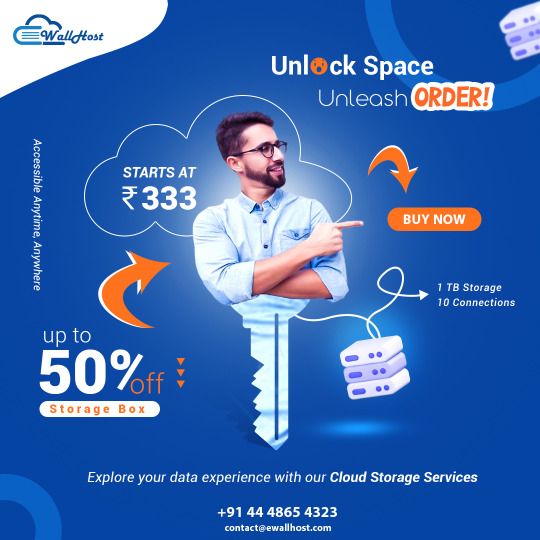
We are back with something new! 👀👀
We are thrilled to announce our new product launch ☁ Cloud Storage Services.
So, what next? 🤔 You no longer have to worry about finding the perfect place to store your data. Reserve your new cloud storage home today and keep your files safe and easily accessible. 📂
0 notes
Text
Geneva-based Infomaniak has been recovering 100 per cent of the electricity it uses since November 2024.
The recycled power will be able to fuel the centralised heating network in the Canton of Geneva and benefit around 6,000 households.
The centre is currently operating at 25 per cent of its potential capacity. It aims to reach full capacity by 2028.
Swiss data centre leads the way for a greener cloud industry
The data centre hopes to point to a greener way of operating in the electricity-heavy cloud industry.
"In the real world, data centres convert electricity into heat. With the exponential growth of the cloud, this energy is currently being released into the atmosphere and wasted,” Boris Siegenthaler, Infomaniak's Founder and Chief Strategy Officer, told news site FinanzNachrichten.
“There is an urgent need to upgrade this way of doing things, to connect these infrastructures to heating networks and adapt building standards."
Infomaniak has received several awards for the energy efficiency of its complexes, which operate without air conditioning - a rarity for hot data centres.
The company also builds infrastructure underground so that it doesn’t have an impact on the environment.
Swiss data centre recycles heat for homes
At Infomaniak, all the electricity that powers equipment like servers, inverters and ventilation is converted into heat at a temperature of 40 to 45C.
This is then channelled to an air/water exchanger which filters it into a hot water circuit. Heat pumps are used to increase its temperature to 67C in summer and 85C in winter.
How many homes will be heated by the data centre?
When the centre is operating at full capacity, it will supply Geneva’s heating network with 1.7 megawatts, the amount needed for 6,000 households per year or for 20,000 people to take a 5-minute shower every day.
This means the Canton of Geneva can save 3,600 tonnes of CO2 equivalent (tCO2eq) of natural gas every year, or 5,500 tCO2eq of pellets annually.
The system in place at Infomaniak’s data centre is free to be reproduced by other companies. There is a technical guide available explaining how to replicate the model and a summary for policymakers that advises how to improve design regulations and the sustainability of data centres.
#good news#environmentalism#science#environment#climate change#climate crisis#switzerland#geneva#Infomaniak#cloud storage#cloud data#carbon emissions#heat pumps
43 notes
·
View notes
Text
i hate cloud storage. no i do not want to save my data on a computer that is somewhere else. i want my data with me. on MY computer. i'm not trusting it on a corp computer
6 notes
·
View notes
Text
trying to focus on my(online, untimed) final exam but my head is full of hiveswap. what the hell do jadebloods do after exile.
#ooc#what structure does the alternian government have? do they have physical records stored on some kind of bookhiveship? bookhivestation?#planet?#where do trials take place?#where does his honourable tyrrany come in#are alternian doccuments (off planet i mean) all based in the cloud?#and by the cloud i mean kept in physical servers that are accessed via colony/warships remotely#in my head im imagining a station where helmsmen are maintained and exchanged or stored. stored helms powering the empire's data servers#uuuuu#helmspa. not that i think it would be very spalike#but i do like to imagine helmsmen getting unplugged and bathed and rested every once in a while#washed up by their helmsmechanics#i imagine the mechanics socialize between ships but i also imagine most helmsmen are too drained to do much socialization#ANYWAY none of this is necessarily canon to foly's timeline im just brainstorming#i think a massive data storage space station would be cool#weapons development also. scienterrorists developing new helming technology
3 notes
·
View notes
Text
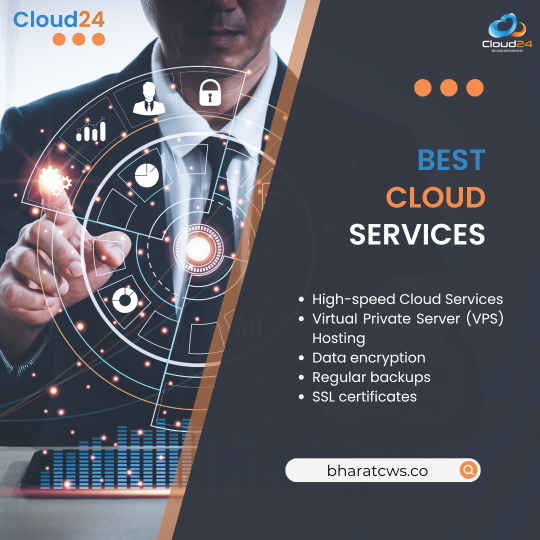
Best Cloud Service
The primary reason to have Secure Cloud Service is active and practicing internet activity, allowing you to have necessary data easily, being fast and secure from cyber threats.
Cloud24 offers data encryption, scheduled data backup, DDoS service and offer the evaluation of website requirements and security.
Cloud24 is safe Cloud hosting to save your data, guarantee the site’s stability and gain the audience’s trust to help you succeed online.
3 notes
·
View notes
Text
our exhibition text
Take a look into our exhibition via our exhibition text ...







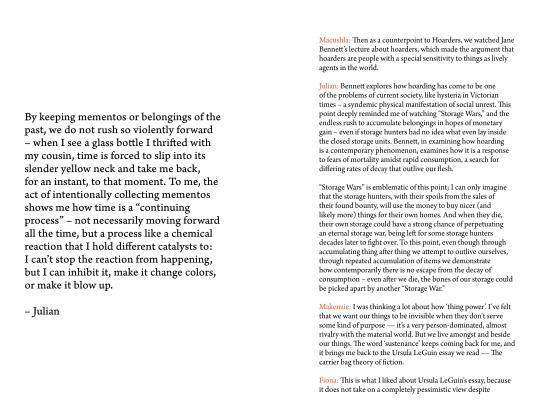


#forthebirdswhoownnothing#storage#exhibition#contemporary art#data storage#keeping house#cloud storage#storage solutions#uhaul
2 notes
·
View notes
Text
need to shell out for a new laptop before the end of the year - for a lot of reasons but mainly bc support ending for win8.1 makes fixing the current beast rather pointless :/ (and. admittedly. there is a lot to fix. she's old and she has suffered.)
but my current beastie is from the last gen of laptops with a disc drive and the thought of using an external/usb disc drive is enough to make me cry tears of blood
#really though it is time to upgrade#and i hate to say it because she /runs/ fine it's all hardware issues w parts that can absolutely be replaced#but if i can't use it to run the programs i need then shelling out the money for those parts would ultimately be a waste#but also the fact that this machine that runs fine is no longer worth fixing bc some google-based bullshit just won't support win8.1 anymor#is ALSO a fucking waste & a pile of planned obsolescence bullshit! and i hate it!#but uh. even though she runs fine and she totally does. she does need. uh.#new keyboard (only 1/3 of keys work; currently use usb keyboard)#new trackpad ribbon cable (trackpad does not currently work; using external usb mouse)#new power button and connecting ribbon cable (turning it on involves opening it up and causing an intentional short-circuit every time.)#(a problem largely solved by simply never turning her completely off- except she also needs)#a new battery (current battery does not charge at all; machine needs to be constantly plugged in or it shuts down immediately)#...ok i might be the 'this is fine' dog about this#but i am still upset! that i will no longer have a disc drive inside my damn laptop.#that's the disc drive's natural habitat; that's where it should be; it's weird and offputting to have it connected via usb!#ack. why do tech companies fuck everything up.#and that's without getting into the way new devices offer less harddrive space so people will use the fucking cloud or whatever???#yeah sorry no i'm not using your goddamn data mining corporate off-site storage i want to keep my shit on my own goddamn machine#go to actual hell if you're trying to sell me a pc with less than at least 500GB of storage i swear to fuck#...in essence you could say the whole process is leaving me rather grumpy
4 notes
·
View notes
Text
so i've been working on a dana scully version of this gifset and I'm like 8 hours into capturing the 220 gifs that I need for it when I drop the hard drive that I was saving them all to and, because external drives are the most fragile thing in the world, lost all of it. And I think I could have coped with that just about if I hadn't gone 'hmmm I'm low on space on my laptop maybe I'll put all the other gifsets that I've made and the six or so gifsets that I've been working on since January on the external drive too'
#this is why i just save everything to my fucking desktop#genuinely why are we still using data storage that can't tolerate being dropped half a meter#i fucking hate how sensitive hdd drives are but I've never found an affordable solid state that I trust#and i refuse to use cloud based storage#I don't want to fucking rent digital storage thanks that's bullshit
4 notes
·
View notes
Text
A Complete Guide to Mastering Microsoft Azure for Tech Enthusiasts
With this rapid advancement, businesses around the world are shifting towards cloud computing to enhance their operations and stay ahead of the competition. Microsoft Azure, a powerful cloud computing platform, offers a wide range of services and solutions for various industries. This comprehensive guide aims to provide tech enthusiasts with an in-depth understanding of Microsoft Azure, its features, and how to leverage its capabilities to drive innovation and success.
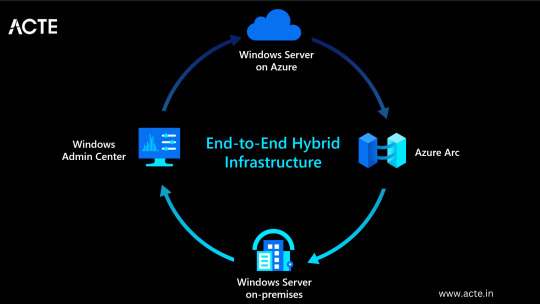
Understanding Microsoft Azure
A platform for cloud computing and service offered through Microsoft is called Azure. It provides reliable and scalable solutions for businesses to build, deploy, and manage applications and services through Microsoft-managed data centers. Azure offers a vast array of services, including virtual machines, storage, databases, networking, and more, enabling businesses to optimize their IT infrastructure and accelerate their digital transformation.
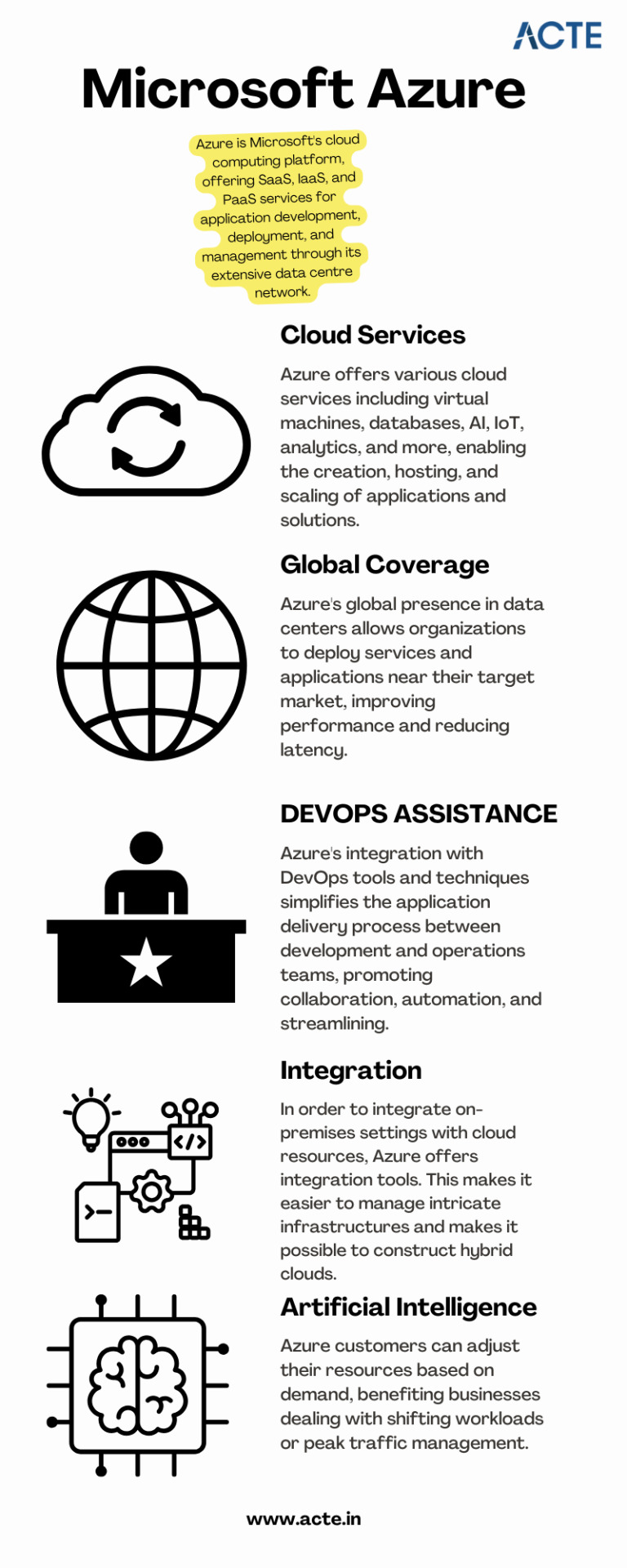
Cloud Computing and its Significance
Cloud computing has revolutionized the IT industry by providing on-demand access to a shared pool of computing resources over the internet. It eliminates the need for businesses to maintain physical hardware and infrastructure, reducing costs and improving scalability. Microsoft Azure embraces cloud computing principles to enable businesses to focus on innovation rather than infrastructure management.
Key Features and Benefits of Microsoft Azure
Scalability: Azure provides the flexibility to scale resources up or down based on workload demands, ensuring optimal performance and cost efficiency.
Vertical Scaling: Increase or decrease the size of resources (e.g., virtual machines) within Azure.
Horizontal Scaling: Expand or reduce the number of instances across Azure services to meet changing workload requirements.
Reliability and Availability: Microsoft Azure ensures high availability through its globally distributed data centers, redundant infrastructure, and automatic failover capabilities.
Service Level Agreements (SLAs): Guarantees high availability, with SLAs covering different services.
Availability Zones: Distributes resources across multiple data centers within a region to ensure fault tolerance.
Security and Compliance: Azure incorporates robust security measures, including encryption, identity and access management, threat detection, and regulatory compliance adherence.
Azure Security Center: Provides centralized security monitoring, threat detection, and compliance management.
Compliance Certifications: Azure complies with various industry-specific security standards and regulations.
Hybrid Capability: Azure seamlessly integrates with on-premises infrastructure, allowing businesses to extend their existing investments and create hybrid cloud environments.
Azure Stack: Enables organizations to build and run Azure services on their premises.
Virtual Network Connectivity: Establish secure connections between on-premises infrastructure and Azure services.
Cost Optimization: Azure provides cost-effective solutions, offering pricing models based on consumption, reserved instances, and cost management tools.
Azure Cost Management: Helps businesses track and optimize their cloud spending, providing insights and recommendations.
Azure Reserved Instances: Allows for significant cost savings by committing to long-term usage of specific Azure services.
Extensive Service Catalog: Azure offers a wide range of services and tools, including app services, AI and machine learning, Internet of Things (IoT), analytics, and more, empowering businesses to innovate and transform digitally.
Learning Path for Microsoft Azure
To master Microsoft Azure, tech enthusiasts can follow a structured learning path that covers the fundamental concepts, hands-on experience, and specialized skills required to work with Azure effectively. I advise looking at the ACTE Institute, which offers a comprehensive Microsoft Azure Course.

Foundational Knowledge
Familiarize yourself with cloud computing concepts, including Infrastructure as a Service (IaaS), Platform as a Service (PaaS), and Software as a Service (SaaS).
Understand the core components of Azure, such as Azure Resource Manager, Azure Virtual Machines, Azure Storage, and Azure Networking.
Explore Azure architecture and the various deployment models available.
Hands-on Experience
Create a free Azure account to access the Azure portal and start experimenting with the platform.
Practice creating and managing virtual machines, storage accounts, and networking resources within the Azure portal.
Deploy sample applications and services using Azure App Services, Azure Functions, and Azure Containers.
Certification and Specializations
Pursue Azure certifications to validate your expertise in Azure technologies. Microsoft offers role-based certifications, including Azure Administrator, Azure Developer, and Azure Solutions Architect.
Gain specialization in specific Azure services or domains, such as Azure AI Engineer, Azure Data Engineer, or Azure Security Engineer. These specializations demonstrate a deeper understanding of specific technologies and scenarios.
Best Practices for Azure Deployment and Management
Deploying and managing resources effectively in Microsoft Azure requires adherence to best practices to ensure optimal performance, security, and cost efficiency. Consider the following guidelines:
Resource Group and Azure Subscription Organization
Organize resources within logical resource groups to manage and govern them efficiently.
Leverage Azure Management Groups to establish hierarchical structures for managing multiple subscriptions.
Security and Compliance Considerations
Implement robust identity and access management mechanisms, such as Azure Active Directory.
Enable encryption at rest and in transit to protect data stored in Azure services.
Regularly monitor and audit Azure resources for security vulnerabilities.
Ensure compliance with industry-specific standards, such as ISO 27001, HIPAA, or GDPR.
Scalability and Performance Optimization
Design applications to take advantage of Azure’s scalability features, such as autoscaling and load balancing.
Leverage Azure CDN (Content Delivery Network) for efficient content delivery and improved performance worldwide.
Optimize resource configurations based on workload patterns and requirements.
Monitoring and Alerting
Utilize Azure Monitor and Azure Log Analytics to gain insights into the performance and health of Azure resources.
Configure alert rules to notify you about critical events or performance thresholds.
Backup and Disaster Recovery
Implement appropriate backup strategies and disaster recovery plans for essential data and applications.
Leverage Azure Site Recovery to replicate and recover workloads in case of outages.
Mastering Microsoft Azure empowers tech enthusiasts to harness the full potential of cloud computing and revolutionize their organizations. By understanding the core concepts, leveraging hands-on practice, and adopting best practices for deployment and management, individuals become equipped to drive innovation, enhance security, and optimize costs in a rapidly evolving digital landscape. Microsoft Azure’s comprehensive service catalog ensures businesses have the tools they need to stay ahead and thrive in the digital era. So, embrace the power of Azure and embark on a journey toward success in the ever-expanding world of information technology.
#microsoft azure#cloud computing#cloud services#data storage#tech#information technology#information security
6 notes
·
View notes
Text
AI-driven admin analytics: Tackling complexity, compliance, and customization
New Post has been published on https://thedigitalinsider.com/ai-driven-admin-analytics-tackling-complexity-compliance-and-customization/
AI-driven admin analytics: Tackling complexity, compliance, and customization

As productivity software evolves, the role of enterprise IT admins has become increasingly challenging.
Not only are they responsible for enabling employees to use these tools effectively, but they are also tasked with justifying costs, ensuring data security, and maintaining operational efficiency.
In my previous role as a Reporting and Analytics Product Manager, I collaborated with enterprise IT admins to understand their struggles and design solutions. This article explores the traditional pain points of admin reporting and highlights how AI-powered tools are revolutionizing this domain.
Key pain points in admin reporting
Through my research and engagement with enterprise IT admins, several recurring challenges surfaced:
Manual, time-intensive processes: Admins often spent significant time collecting, aggregating, and validating data from fragmented sources. These manual tasks not only left little room for strategic planning but also led to frequent errors.
Data complexity and compliance: The explosion of data, coupled with stringent regulatory requirements (e.g., GDPR, HIPAA), made ensuring data integrity and security a daunting task for many admins.
Unpredictable user requests: Last-minute requests or emergent issues from end-users often disrupted admin workflows, adding stress and complexity to their already demanding roles.
Limited insights for decision-making: Traditional reporting frameworks offered static, retrospective metrics with minimal foresight or actionable insights for proactive decision-making.
Optimizing LLM performance and output quality
The session focuses on enhancing outcomes for customers and businesses by optimizing the performance and output quality of generative AI.

Building a workflow to solve reporting challenges
To address these pain points, I developed a workflow that automates data collection and improves overall reporting efficiency. Below is a comparison of traditional reporting workflows and an improved, AI-driven approach:
Traditional workflow:
Data collection: Manually gathering data from different sources (e.g., logs, servers, cloud platforms).
Data aggregation: Combining data into a report manually, often using Excel or custom scripts.
Validation: Ensuring the accuracy and consistency of aggregated data.
Report generation: Compiling and formatting the final report for stakeholders.
Improved workflow (AI-driven):
Automation: Introducing AI tools to automate data collection, aggregation, and validation, which significantly reduces manual efforts and errors.
Real-Time Insights: Integrating real-time data sources to provide up-to-date, actionable insights.
Customization: Providing interactive dashboards for on-demand reporting, enabling admins to track key metrics and make data-driven decisions efficiently.
Evolution with AI capabilities: Market research insights
Several leading companies have successfully implemented AI to transform their admin reporting processes. Below are examples that highlight the future of admin reporting:
Microsoft 365 Copilot
Microsoft’s AI-powered Copilot integrates with its suite of apps to provide real-time data insights, trend forecasting, and interactive visualizations.
This proactive approach helps IT admins make data-driven decisions while automating manual processes. By forecasting trends and generating real-time reports, Copilot allows admins to manage resources and workloads more effectively.
Salesforce Einstein Analytics
Salesforce Einstein leverages advanced AI for predictive modeling, customer segmentation, and enhanced analytics.
Admins can forecast future trends based on historical data and create personalized reports that directly impact strategic decision-making. This enables actionable insights that were previously difficult to uncover manually.
Box AI agents
Box’s AI agents autonomously collect, analyze, and report data. These agents detect anomalies and generate detailed reports, freeing admins to focus on higher-priority tasks. By automating complex reporting processes, Box’s AI agents enhance both speed and accuracy in decision-making.
How generative AI is revolutionizing drug discovery and development
Discover how generative AI is transforming drug discovery, medical imaging, and patient outcomes to accelerate advancements with AstraZeneca

Future capabilities and opportunities
Looking ahead, several emerging capabilities can further unlock the potential of admin reporting:
Seamless data integration: AI-powered tools enable organizations to unify data from disparate systems (e.g., cloud storage, internal databases, third-party applications), providing a holistic view of critical metrics and eliminating the need for manual consolidation.
AI-powered decision support: Context-aware AI can offer personalized recommendations or automate complex workflows based on historical patterns and operational context, reducing manual intervention while enhancing accuracy.
Automated compliance checks: AI tools can continuously monitor compliance with evolving regulations, automatically generating compliance reports to keep organizations secure and up-to-date.
Security and performance monitoring: AI can detect unusual patterns in data, such as unexpected traffic spikes or system anomalies, allowing admins to proactively address potential security threats or failures before they escalate.
Interactive dashboards and NLP: By incorporating natural language processing (NLP), AI tools enable admins to query data using plain language and receive intuitive, visual reports, streamlining analysis and enhancing user experience and usability.
Conclusion
The transformation of admin reporting from manual workflows to AI-driven insights has revolutionized IT operations. By automating routine tasks, delivering real-time insights, and enhancing predictive capabilities, AI empowers IT admins to focus on strategic initiatives while ensuring data accuracy and compliance.
As organizations continue to adopt advanced AI capabilities, the future of admin reporting holds exciting possibilities, from seamless data integration to adaptive, context-aware decision-making tools.
These innovations will not only enhance efficiency but also enable organizations to thrive in an increasingly complex, data-driven world.
#admin#agents#ai#AI AGENTS#ai tools#AI-powered#Analysis#Analytics#anomalies#applications#approach#apps#Article#Articles#automation#box#Building#Cloud#cloud storage#Companies#comparison#complexity#compliance#consolidation#Customer Segmentation#data#data collection#Data Integration#data integrity#data security
0 notes
Text
The advantages of Computer Networks: Enhancing Connectivity & Efficiency
Computer networks form the backbone of modern communication, business operations, and data management, enabling seamless connectivity and resource sharing. Whether in workplaces, homes, or global enterprises, networking has transformed the way we exchange information. Here’s why computer networks are essential for efficiency, security, and collaboration. 1. Seamless Communication &…
#business connectivity#cloud storage solutions#computer networking benefits#digital collaboration#IT infrastructure efficiency#network performance optimization#secure data sharing
1 note
·
View note
Video
youtube
🔐 Your Data Deserves Better
This Wednesday, we’re diving into the future of data protection with an exclusive presentation on GotBackup — the cloud backup service that secures your files and helps you earn residual income. 💻💰
🌍 100% Online & Free 🗓️ Don’t miss it — spots are limited!
👉 Reserve Your Spot Now
https://bit.ly/42JEDax
#GotBackup #DataProtection #CloudBackup #DigitalSecurity #OnlineBackup #PassiveIncome #WorkFromHome #TechTools #BackupSolutions #SecureYourFiles #ProtectYourData #TumblrEvents #CyberSecurity #CloudStorage
(via 🔒 Why You Can’t Miss This Wednesday’s GotBackup Presentation!)
#GotbackUp#data protection#cloud backup#digital security#Online Backup#passive income#work from home#tech tools#backup solution#secure your files#protect your data#tumblr event#cybersecurity#cloud storage
0 notes
Text
The hidden cost of your cloud storage – and how to clean it up | The Independent
It feels like a great, banal paradox of modern life: we’re always signing up for more storage, and constantly on the verge of running out. iCloud, Google Drive, Dropbox: many of us are fully paid-up customers of them all, for a mixture of personal and professional purposes – and the expense can slowly but surely creep up.
0 notes
Text
What is Cloud Computing in Healthcare?

Cloud computing for the healthcare industry is the way of implementing remote server access through the internet for storing, managing, and processing healthcare data. In this process, on-site data centers aren’t established for hosting data on personal computers and hence provides a flexible solution for healthcare stakeholders to remotely access servers where the data is hosted.
Shifting to the cloud has two-fold benefits for both patients and providers. On the business side, virtualization in cloud computing has been beneficial to lower the operational spend while enabling healthcare providers to deliver high-quality and personalized care.
The patients, on the other hand, are getting accustomed with fast delivery of the healthcare services. Healthcare cloud computing increases involvement of patients by giving them access to their healthcare data, which ultimately results in better patient outcomes.
The remote accessibility of healthcare added with the democratization of data free the providers and patients which breaks down the location barriers to healthcare access.
What are the Benefits of Cloud Computing in the Healthcare Industry?

Cost-effective solution:The primary premise of healthcare cloud services is real time availability of computer resources such as data storage and computing power. Both healthcare providers and hospitals don’t need to buy data storage hardware and software. Moreover, there are no upfront charges linked with the cloud for healthcare, they will only have to pay for the resource they actually use. Applications of cloud computing in healthcare provides an optimum environment for scaling without paying much. With the patient’s data coming from not only EMRs but also through healthcare apps and wearables, a cloud environment makes it possible to scale the storage while keeping the costs low.
Easy interoperability: Interoperability is establishing data integrations through the entire healthcare system, regardless of the origin or where the data is stored. Interoperability powered by healthcare cloud solutions, makes patients’ data available to easily distribute and get insights to aid healthcare delivery. Healthcare cloud computing enables healthcare providers in gaining access to patient data gathered from multiple sources, share it with key stakeholders and deliver timely protocols.
Ownership of data by patients:The combination of cloud computing and healthcare democratize data and give the patients control over their health. It increases participation of patients in decisions related to their health, working as a tool to better patient involvement and education. The importance of cloud computing in the industry can also be seen by the fact that the medical data can be archived and then retrieved easily when the data is stored on the cloud. With an increase in the system uptime, the redundant data reduces to a huge extent, and the data recovery also becomes easier.
Improved collaboration:The implementation of cloud for healthcare has a major role in boosting collaboration. By storing the Electronic Medical Records in the cloud, patients don’t need to have separate medical records for every doctor visit. The doctors can easily view the information, see the outcome of previous interactions with the specialists, and even share information with each other. This saves their time and enables them to provide more accurate treatment.
Enhanced patient experience:With the help of cloud for healthcare, doctors have now the power to increase the patient involvement by giving them anytime access anywhere to medical data, test results, and even doctors’ notes. This gives the patients control over their health as they become more educated regarding their medical conditions. In addition to this, cloud computing in healthcare provides a check for the patients from being overprescribed or dragged into unnecessary testing as doctors can find in the medical records.
Click the link below to learn more about the blog What is Cloud Computing in Healthcare? https://tudip.com/blog-post/what-is-cloud-computing-in-healthcare/
#tudip.com#tudip#cloud computing in healthcare#healthcare cloud solutions#benefits of cloud computing in healthcare#healthcare data storage cloud#cloud healthcare applications#cloud-based EMR solutions#healthcare IT cloud infrastructure#patient data cloud access#cloud computing for hospitals#healthcare data interoperability#remote healthcare data access#cloud for electronic medical records#cloud-based patient records#scalable healthcare cloud#healthcare virtualization cloud#medical data in the cloud#cloud healthcare collaboration#digital health cloud platforms#cost-effective healthcare cloud#HIPAA compliant cloud solutions#cloud computing in medical industry#healthcare cloud integration#cloud computing benefits for patients
0 notes